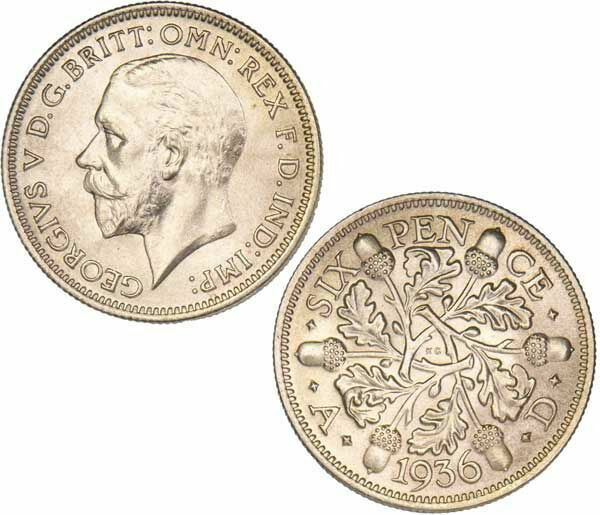The obverse of the George V sixpence used the portrait of George V by Sir Bertram Mackennal (1863-1931) engraved using the mechanical reduction machine to the appropriate size. The reverse finally discarded the Merlen reverse first used in 1831. Ironically, however, the lion on crown design which replaced it was last used on sixpences in 1829! This modified version was almost identical to that designed by de Saulles for the Edward VII shilling and carried forward to the George V shilling.
In line with the other silver denominations, the silver content of the metal was reduced to 50% in 1920, and further modified in 1922 after it was found that streaking occurred. Another modification to the metal content was made in 1927 when the new acorn reverse was introduced. This design, depicting six acorns (presumably indicating six pence) amongst oak leaves, was one of a number of new designs for coinage by George Kruger Gray (1880-1943) and was sometimes referred to somewhat unkindly as ‘the garden of weeds’. The new designs were introduced to the public in 1927 by way of proof set of six silver coins and were all abandoned in 1937 on the advent of the George VI coinage.
This series should be collected in Extremely Fine to Mint State, although some of the dates are quite difficult to obtain in this condition. The acorn reverse type sixpence of 1928-36 often turns up cleaned or polished, sometimes to such an extent that it appears lacquered. Care should be taken in grading this coin, with special attention being paid to the detail on the base of each of the six acorns. Have a closer look at this coin below.


























